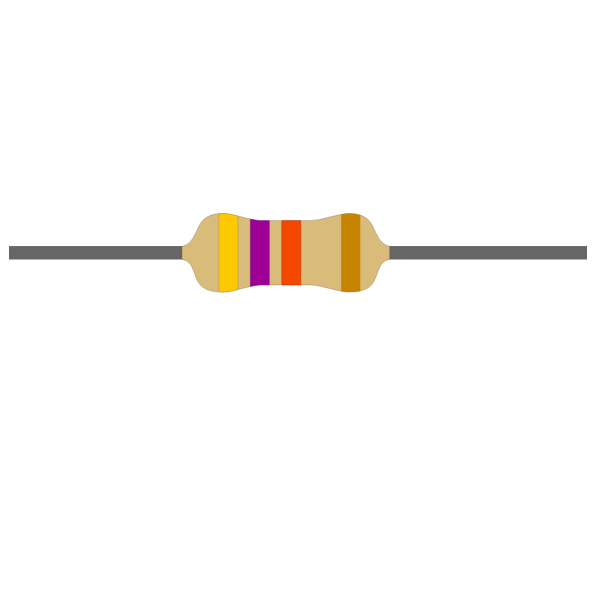Why resistor calculator ?
Electronic components can be a mystery to many, especially for those just starting in the world of DIY electronics or electrical engineering. One common component that often leaves people scratching their heads is the humble resistor. These little devices play a crucial role in controlling the flow of electricity in circuits, but their values are typically represented by a set of colored bands that can be quite confusing to decipher.
To make your electronics projects a breeze, we've developed a user-friendly Resistor Color Code Calculator Tool that takes the guesswork out of determining resistor values. Say goodbye to squinting at those tiny color bands and hello to precision and accuracy!
How Does Our Calculator Work?
Our Resistor Color Code Calculator simplifies the process. Here's how it works:
1. Input Color Bands: Enter the colors of the bands on your resistor into the calculator. You can input either four or five bands, depending on your resistor type.
2. Instant Calculation: Our tool will instantly decode the colors and calculate the precise resistance value for you. No more guesswork, no more errors.
3. Tolerance Information: In addition to the resistance value, the calculator will also provide you with the tolerance information, ensuring that your design meets your specifications.
Why Choose Our Calculator?
1. Accuracy: Our tool uses a comprehensive color code database, guaranteeing accurate results every time.
2. User-Friendly: You don't need to be an electronics expert to use our calculator. It's designed for beginners and pros alike.
3. Time-Saving:With our calculator, you'll save valuable time that you can put into your actual electronics projects.
4.Mobile-Friendly: Access our calculator from your smartphone, tablet, or computer, making it convenient for on-the-go calculations.
How to calculate any resistor value ?
Calculating the resistance value of a carbon composition resistor based on its color code involves decoding the color bands on the resistor's body. Carbon composition resistors typically have four or five color bands that represent different digits and multipliers. Here's how to calculate the resistance value from the color code:
1. **Identify the color bands: Examine the resistor to determine the colors of the bands. Carbon composition resistors typically have four or five color bands. The colors represent different digits and multipliers.
2. **Assign values to the colors: Use the following color chart to assign numerical values to each color:
Resistor colour code table :
| Color | Number | Multiplier |
|---|---|---|
| Black | 0 | 100 |
| Brown | 1 | 101 |
| Red | 2 | 102 |
| Orange | 3 | 103 |
| Yellow | 4 | 104 |
| Green | 5 | 105 |
| Blue | 6 | 106 |
| Violet | 7 | 107 |
| Grey | 8 | 108 |
| White | 9 | 109 |
3. **Read the color bands: Start with the band closest to one end of the resistor (usually the side with a wider gap) and work your way toward the other end. Note down the color of each band.
4. **Determine the resistance value: Use the color code to determine the resistance value based on the following rules:
- For a 4-band resistor, the first two bands represent the first and second digits, the third band represents the multiplier, and the fourth band represents the tolerance.
- For a 5-band resistor, the first three bands represent the first, second, and third digits, the fourth band represents the multiplier, and the fifth band represents the tolerance.
5. **Calculate the resistance: Combine the values of the first two or three bands as a single number and multiply it by the multiplier value from the third or fourth band. This will give you the resistance value in ohms. If there is a tolerance band, it indicates the tolerance of the resistor's value.
For example, if you have a 4-band resistor with the colors: Red, Red, Brown, Gold, the calculation would be:
- First digit: Red (2)
- Second digit: Red (2)
- Multiplier: Brown (10)
- Tolerance: Gold (±5%)
Combine the first two digits (22) and multiply by the multiplier (10), which equals 220 ohms. The tolerance is ±5%, so the resistor's value is 220 ohms with a tolerance of ±5%.

In picture, there are four colour . First one is yellow , second one is violet , third one is orange and last one is gold . Following table will give you the value for each individual color . Last band , that means in this example gold , is tolerance of the resistor or You can calculate the value of carbon resistor by using our tools . The value of the above resistor is , for yellow 4 , for violet 7 and for orange 3 . That means 47 x 103 = 47000 Ohm.
Select first colour of band :
Select second colour of band :
Select Third colour of band :
Select Fourth colour of band :
Understanding resistor color codes is no longer a barrier to your electronics projects. With our Resistor Color Code Calculator, you can confidently determine the resistance value of any resistor, no matter how many bands it has. Say goodbye to frustration and hello to precision.